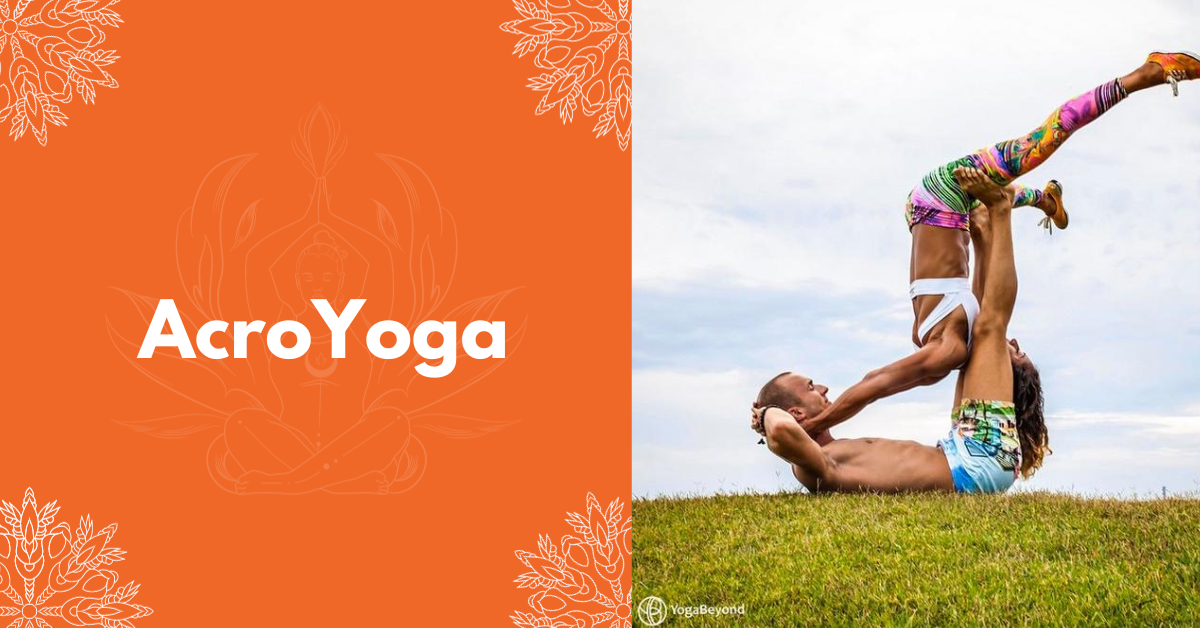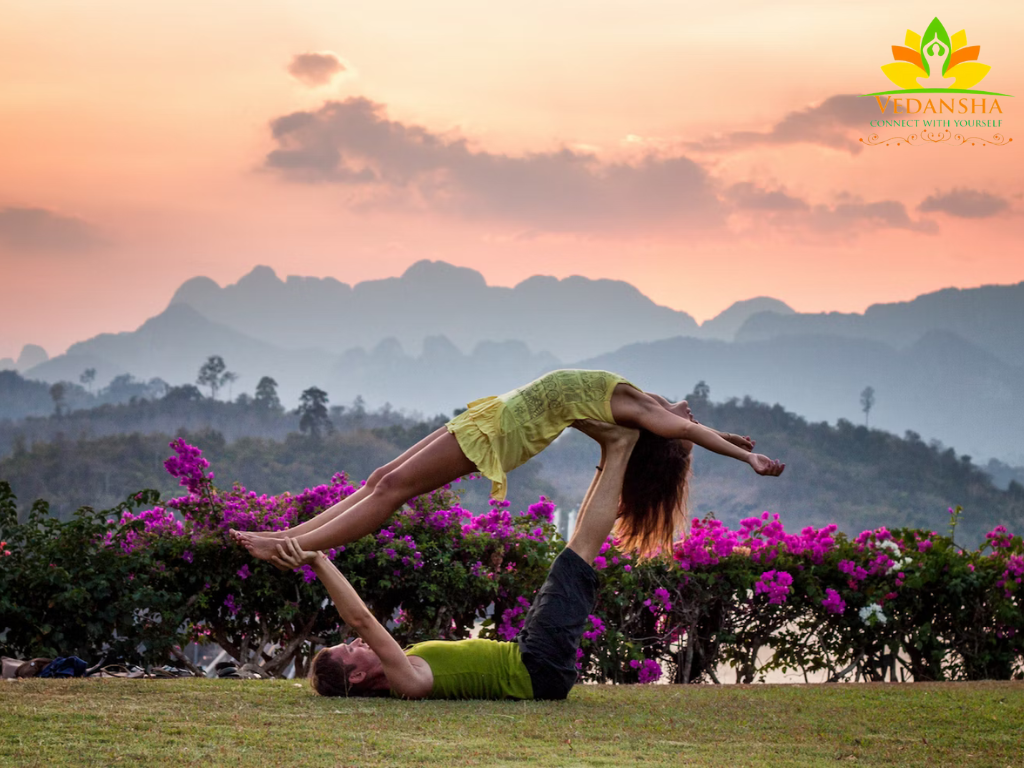
The World of AcroYoga: Balance, Trust, and Connection
AcroYoga: A Journey of Mind, Body, and Soul
AcroYoga is a captivating fusion of acrobatics, yoga, and therapeutic touch that brings people together in a unique and exhilarating way. This dynamic practice combines the strength and balance of acrobatics with the mindfulness and breathwork of yoga, resulting in a beautiful synergy of mind, body, and spirit.
Whether you’re soaring through the air, providing a solid base for your partner, or finding serenity in therapeutic flying, AcroYoga offers a diverse range of experiences that promote trust, connection, and physical fitness. As you delve into the world of AcroYoga, you’ll discover a profound sense of community, playfulness, and personal growth that extends far beyond the mat.
The Origins of AcroYoga
Discovering the Roots
AcroYoga has a rich and diverse history, with its roots in various traditional practices from around the world. It draws inspiration from yoga, acrobatics, and therapeutic touch techniques. The modern form of AcroYoga we know today was developed in the early 21st century by a group of innovative practitioners who sought to combine these elements into a cohesive and accessible practice.
The Three Pillars of AcroYoga

Balance
Balance is at the core of AcroYoga. Practitioners learn to balance their own bodies and trust their partners to maintain equilibrium. This not only strengthens physical balance but also cultivates mental and emotional balance, fostering a sense of harmony within.
Trust
Trust is the foundation of AcroYoga. In each pose and movement, practitioners must trust their partner completely. This trust extends beyond the physical realm and helps build deep connections and bonds with others.
Connection
AcroYoga is all about connection. It connects people through touch, movement, and shared experiences. This practice encourages participants to be present in the moment, fostering a deeper connection with themselves and those around them.
The Benefits of AcroYoga
Physical Benefits
- Strength and Flexibility: AcroYoga challenges your muscles and enhances flexibility, leading to increased physical strength and agility.
- Improved Posture: Regular practice can correct posture issues and promote better alignment.
- Stress Reduction: Engaging in AcroYoga releases endorphins, reducing stress and promoting relaxation.
Emotional Benefits
- Trust Building: Learning to trust your partner fosters emotional growth and intimacy.
- Enhanced Communication: AcroYoga enhances non-verbal communication skills, helping you connect with others on a deeper level.
- Mindfulness: Being present in each pose cultivates mindfulness and self-awareness.
Getting Started with AcroYoga

Finding a Community
To begin your AcroYoga journey, look for local classes, workshops, or online communities. Practicing with experienced individuals will help you learn the basics and build confidence.
Basic Poses
Start with foundational poses like “Bird,” “Throne,” and “L-Basing.” These poses are beginner-friendly and will introduce you to the fundamental principles of AcroYoga.
Safety First
Always prioritize safety. Start with low-to-the-ground poses and practice with a spotter until you become more proficient.
Advanced AcroYoga: Taking Your Practice to the Next Level

As you progress in your AcroYoga journey, you may find yourself wanting to explore more advanced poses and sequences. These challenging moves not only test your physical abilities but also deepen your connection with your partner. Here are some advanced AcroYoga poses to aspire to:
1. Star Pose
The Star Pose takes the Throne Pose to the next level. In this advanced pose, the base lies on their back, extending their legs into the air, while the flyer balances on top, extending their body into a star shape. This pose requires exceptional core strength and balance.
2. High Flying Whale
The High Flying Whale is a beautiful combination of balance and trust. The base supports the flyer in a backbend position while holding their hands, creating a graceful arch. This pose exemplifies the harmony between strength and flexibility.
3. Reverse Bird
In the Reverse Bird, the flyer balances on the base’s feet while facing away from them. This pose demands trust and communication between partners, as the flyer relies entirely on the base’s stability.
4. Floating Paschi
Floating Paschi is an acrobatic and complex pose where the flyer balances on the base’s feet, with the base’s legs in a straddle position. It’s a test of strength, flexibility, and precision.
Remember, advanced poses require a solid foundation and a strong partnership. Always practice under the guidance of experienced AcroYoga instructors to ensure safety and proper alignment.
AcroYoga and Meditation: The Mind-Body Connection
Beyond the physical aspects, AcroYoga has a profound impact on the mind and spirit. Many practitioners find that the practice of AcroYoga is a form of moving meditation. Here’s how AcroYoga and meditation go hand in hand:
Mindfulness
AcroYoga encourages you to be fully present in the moment. As you flow through poses and transitions, you’re required to focus on your breath, your body, and your partner. This mindfulness enhances your overall mental clarity and presence.
Trust and Surrender
To successfully practice AcroYoga, you must surrender control and trust your partner. This act of letting go and allowing someone else to support you can be a deeply spiritual experience, fostering trust in yourself and others.
AcroYoga and Your Health: A Holistic Approach

As we’ve explored the physical and mental aspects of AcroYoga, it’s essential to understand how this practice can positively impact your overall health and well-being.
Physical Fitness
AcroYoga provides an excellent full-body workout. It enhances your strength, flexibility, and balance. The various poses and transitions engage muscles you might not typically use in traditional workouts. Over time, this can lead to increased muscle tone, better posture, and improved overall physical fitness.
Stress Reduction
In today’s fast-paced world, stress is a common issue for many. AcroYoga serves as an effective stress reliever. The combination of mindful breathing, physical movement, and the trust-building aspect of practicing with a partner can significantly reduce stress levels and promote relaxation.
Pain Relief
For individuals dealing with chronic pain or discomfort, AcroYoga can be therapeutic. Some poses and stretches can help alleviate tension in specific areas of the body. Additionally, the support and touch involved in AcroYoga can have a soothing effect on sore muscles and joints.
Emotional Well-Being
The practice of AcroYoga can boost your emotional well-being. It encourages self-expression and fosters feelings of joy and connection. The sense of accomplishment that comes from mastering a new pose or sequence can boost your self-esteem and overall happiness.
AcroYoga and Relationships

AcroYoga isn’t just about personal growth; it can also enhance your relationships. Whether you’re practicing with a romantic partner, a friend, or a fellow enthusiast, AcroYoga can strengthen your bonds in several ways:
Communication
Effective communication is crucial in AcroYoga. You and your partner must communicate clearly and honestly to ensure safety and success. This practice can translate to better communication in other areas of your life.
Trust
AcroYoga requires a high level of trust in your partner. Learning to trust and be trusted can deepen your connection with those you practice with and extend to your relationships outside of AcroYoga.
Quality Time
Practicing AcroYoga together offers a unique way to spend quality time with loved ones. It creates memorable shared experiences that can strengthen your relationships.
How to Incorporate AcroYoga into Your Routine
If you’re eager to explore AcroYoga but aren’t sure how to begin, here are some steps to get you started:
1. Find a Community
Look for local AcroYoga classes, workshops, or groups in your area. Joining a community can provide guidance, support, and a sense of belonging.
2. Attend Workshops
Consider attending AcroYoga workshops or retreats to immerse yourself in the practice and learn from experienced instructors.
3. Start Slow
If you’re new to AcroYoga, start with basic poses and gradually progress to more advanced ones. Safety and technique should always be your top priorities.
4. Practice Consistently
Like any discipline, regular practice is key to improvement. Dedicate time to AcroYoga in your weekly schedule.
5. Embrace the Journey
Remember that AcroYoga is not just about achieving the perfect pose; it’s about the journey, the connections you build, and the growth you experience along the way.
The Future of AcroYoga: Innovations and Trends

As AcroYoga continues to evolve, it’s essential to stay updated with the latest innovations and trends in the practice. Here’s a glimpse into what the future holds for AcroYoga enthusiasts:
1. Online Communities and Virtual Classes
The digital age has opened up new opportunities for AcroYoga practitioners. Online communities and virtual classes have become increasingly popular, allowing individuals from all over the world to connect, learn, and practice together. Expect to see a proliferation of online resources, workshops, and tutorials, making AcroYoga accessible to everyone, regardless of their physical location.
2. Fusion Styles
AcroYoga fusion styles are on the rise. These hybrid practices combine AcroYoga with other movement disciplines, such as dance, capoeira, or martial arts. These creative combinations result in exciting and unique movement forms that push the boundaries of traditional AcroYoga.
3. Therapeutic AcroYoga
AcroYoga is not just about acrobatics; it can also be therapeutic. Therapeutic AcroYoga focuses on healing, recovery, and pain relief. Expect to see more classes and workshops dedicated to therapeutic applications, catering to individuals with specific physical or emotional needs.
4. Inclusivity and Diversity
The AcroYoga community is becoming more inclusive and diverse, with practitioners of all ages, body types, and backgrounds joining in. This trend toward inclusivity promotes a welcoming and accepting environment for everyone interested in exploring AcroYoga.
5. Advanced Training and Certification
As AcroYoga gains recognition as a legitimate practice, advanced training programs and certification options are becoming more prevalent. These programs provide practitioners with the opportunity to deepen their knowledge, refine their skills, and potentially become certified instructors.
Beyond AcroYoga: Exploring Related Practices
While AcroYoga is captivating in its own right, it’s just one facet of a broader world of movement and mindfulness practices. If you’re passionate about AcroYoga, you might also be interested in exploring related disciplines, including:
1. Aerial Arts
Aerial arts, such as aerial silks, hoop, and trapeze, share a sense of aerial movement and balance with AcroYoga. These practices offer a unique way to defy gravity and develop strength and flexibility.
2. Partner Dancing
Partner dances like salsa, tango, and swing dancing emphasize connection, trust, and fluidity of movement—all qualities that align with AcroYoga. Exploring partner dancing can enhance your sense of connection with others.
3. Circus Arts
Circus arts encompass a wide range of skills, from juggling and clowning to acrobatics and contortion. Many AcroYoga enthusiasts find kinship with the circus arts community due to the shared love for movement and performance.
Conclusion
AcroYoga is not just a physical practice; it’s a journey of self-discovery, trust, and connection. It offers a unique opportunity to explore the boundaries of your body and mind while forming meaningful relationships. So, take that leap of faith, balance on the edge of possibility, and connect with the world through AcroYoga.
FAQs (Frequently Asked Questions)
1. Is AcroYoga suitable for beginners?
Yes, AcroYoga offers poses and practices suitable for all skill levels, including beginners.
2. Do I need a partner to practice AcroYoga?
While AcroYoga is often practiced with a partner, you can start with solo exercises and gradually transition to partner-based poses.
3. Is AcroYoga safe?
When practiced safely and with proper guidance, AcroYoga is a safe and enjoyable activity. Always prioritize safety and communication with your partner.
4. Can AcroYoga help with anxiety and stress?
Yes, the mindfulness and relaxation aspects of AcroYoga can be beneficial in managing anxiety and reducing stress.
5. What should I wear to an AcroYoga class?
Wear comfortable, stretchy clothing that allows for ease of movement. Avoid clothing with zippers or buttons that could dig into your skin during poses.

